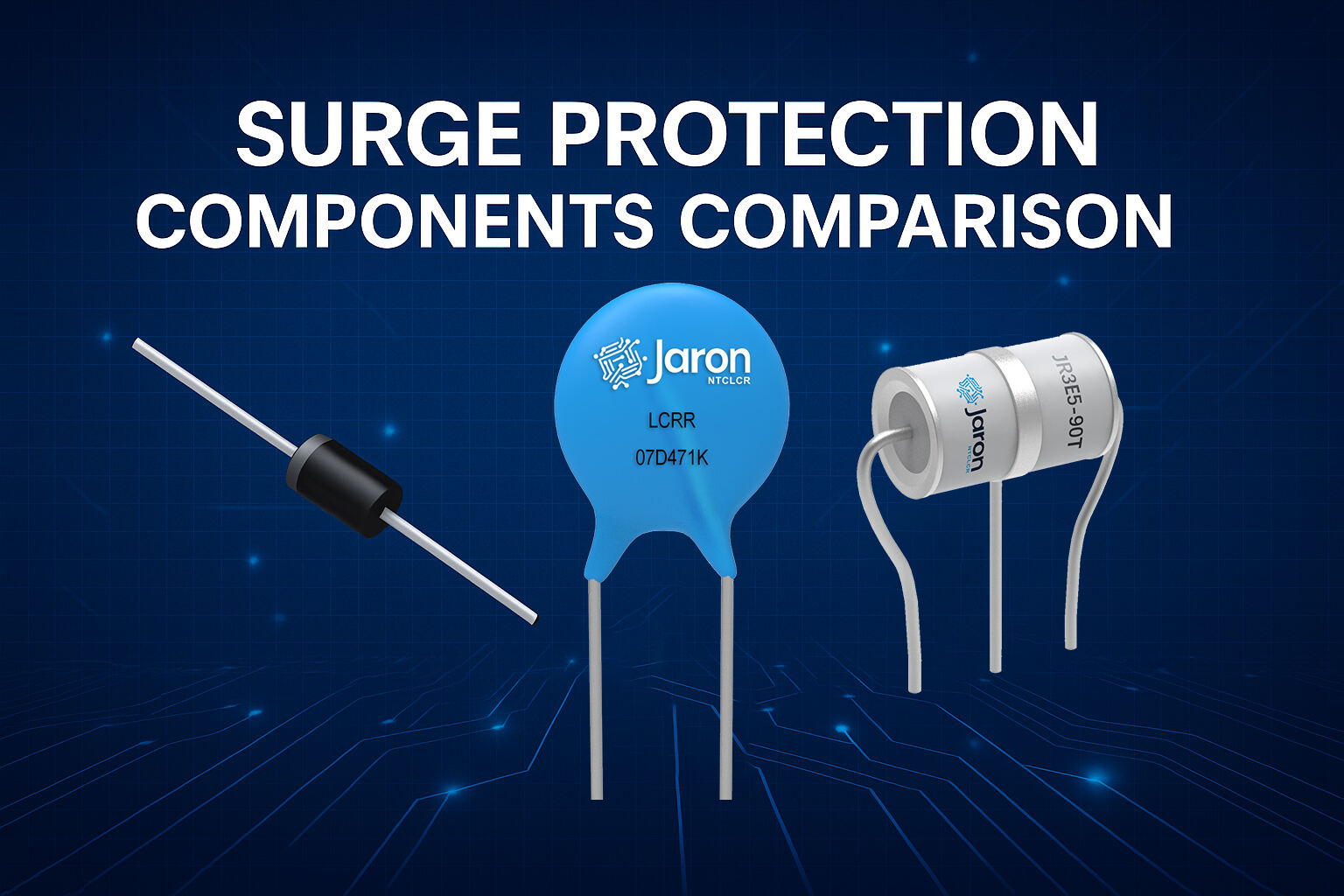Explore the differences between the three major surge protection devices—TVS diodes, varistors, and gas discharge tubes—in terms of response time, surge current capacity, and clamping voltage to help you select the optimal lightning protection solution for your application.

1. Why Is Lightning Surge Protection Essential?
During thunderstorms, powerful lightning discharges generate large-scale electromagnetic pulses (EMP). These transient high-voltage/high-current surges can couple into internal circuits through power lines, signal lines, or grounding systems, resulting in:
Breakdown and failure of integrated circuits (ICs)
Disruption of communication systems
Sensor output anomalies
Overheating and damage to power devices
Data loss in memory/storage units
In high-reliability applications such as industrial control, power systems, network equipment, and surveillance cameras, deploying effective surge protection devices has become a mandatory safety design requirement.
2. Overview of the Three Mainstream Surge Protection Devices
|
Device type |
English abbreviation |
Working type |
Whether it can be integrated |
|
TVS Diode |
TVS |
Pressure limiting type |
✅ Integrable |
|
Varistor |
MOV |
Pressure limiting type |
❌ Discrete |
|
Gas Discharge Tube |
GDT |
Switch type |
❌ Discrete |
These three types of components—TVS diodes, varistors, and gas discharge tubes—are either clamping-type or switching-type protection devices. Their function is to quickly divert transient high voltage to ground or bypass, reducing residual voltage and protecting the main circuit.
3. In-Depth Comparison of Core Performance Parameters
3.1 Response Time
TVS Diode: < 1ns (picosecond level), ideal for ultrafast transient suppression such as ESD and EFT pulses.
Varistor: Typical response time of tens to hundreds of nanoseconds, suitable for medium-speed disturbances.
GDT: Slowest response (25–100ns or more), suitable for absorbing high-energy surges.
Conclusion: For fastest response, TVS is the best choice.
3.2 Surge Current Capability
TVS Diode: Tens to hundreds of amps (8/20μs waveform), for low-power applications.
Varistor: 1kA–40kA depending on specifications, suitable for medium-power systems.
GDT: 10kA–100kA, and highly resistant to repeated surges (>500 times).
Conclusion: For high-current applications, GDT is ideal.
3.3 Clamping Voltage
TVS Diode: Precise clamping voltage, slightly above breakdown voltage.
Varistor: Wide variation in clamping voltage, less precise than TVS.
GDT: Conducts after breakdown with low resistance, but slow recovery and unstable clamping.
Conclusion: For circuits needing precise voltage control, TVS is preferred.
3.4 Lifetime & Durability
TVS Diode: Suited for limited surge events; industrial-grade models recommended.
Varistor: Subject to aging; electrical characteristics degrade with use.
GDT: Best surge resistance and long life, ideal for frequent surges.
Conclusion: Use GDT in high-risk or outdoor environments.
3.5 Integration & Design Flexibility
TVS Diode: Can be integrated with EMI/RFI filters; suitable for compact designs.
Varistor & GDT: Bulky discrete devices; not ideal for high-density PCB layouts.
Conclusion: TVS is ideal for smart devices and compact electronics.
4. Recommended Application Scenarios
|
Application Areas |
Recommended Configuration |
Illustrate |
|
USB/HDMI/High-Speed Interfaces |
TVS Array |
Suppresses ESD and fast transients, protects I/O ports |
|
Power Adapters/LED Drivers |
MOV + TVS |
MOV absorbs main energy, TVS clamps residual voltage |
|
RJ45 Network Ports |
GDT + TVS + Common-mode Choke |
Multi-level protection, compliant with IEC61000-4-5 |
|
Surveillance/Industrial Equipment |
GDT + MOV + TVS |
Full-path protection, improves surge immunity |
|
Telecom Stations/High-Voltage Nodes |
High-power GDT + Multi-stage TVS |
Handles lightning surges, enhances system protection |
5. Triple-Stage Protection Strategy: High-Reliability Surge Design
Typical protection architecture consists of three levels:
Primary Protection: Use GDT or lightning arresters to absorb major surge energy
Secondary Protection: Use MOV to absorb remaining energy
Tertiary Protection: Use TVS to clamp final residual voltage and protect ICs
This architecture balances response speed, current capability, and voltage control—making it the preferred solution for modern surge protection.
6. Conclusion
No single device can meet all surge protection requirements:
For fast response: choose TVS
For high current handling: choose GDT
For cost-performance balance: choose MOV
The optimal design should combine these three devices according to system voltage, interface type, and environmental conditions for maximum reliability.